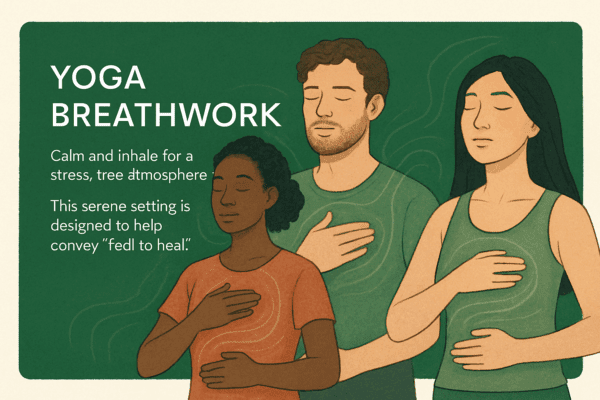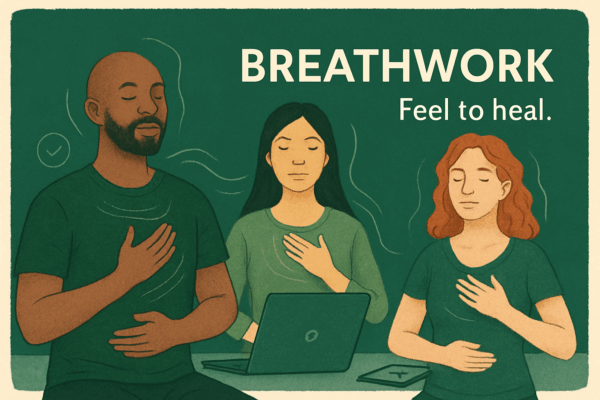Across the UK, more people are seeking deep, transformative experiences that go beyond everyday awareness. Holotropic breathwork uk is at the forefront, offering a unique path to self-discovery and healing.
This 2025 guide gives you everything you need to know about holotropic breathwork uk. Explore its origins, innovative methods, and practical steps for joining a session.
We’ll cover its fascinating history, powerful techniques, how sessions work, trusted UK facilitators, safety tips, integration practices, and answers to common questions.
Ready to unlock profound change? Dive into this comprehensive guide and start your journey with holotropic breathwork uk.
What is Holotropic Breathwork?
Holotropic breathwork uk is gaining momentum as a powerful, experiential practice for personal transformation. But what exactly is it, and where did it come from? To truly understand its unique place in the UK wellness landscape, let’s explore its origins, guiding philosophy, and the methodology behind its profound effects.
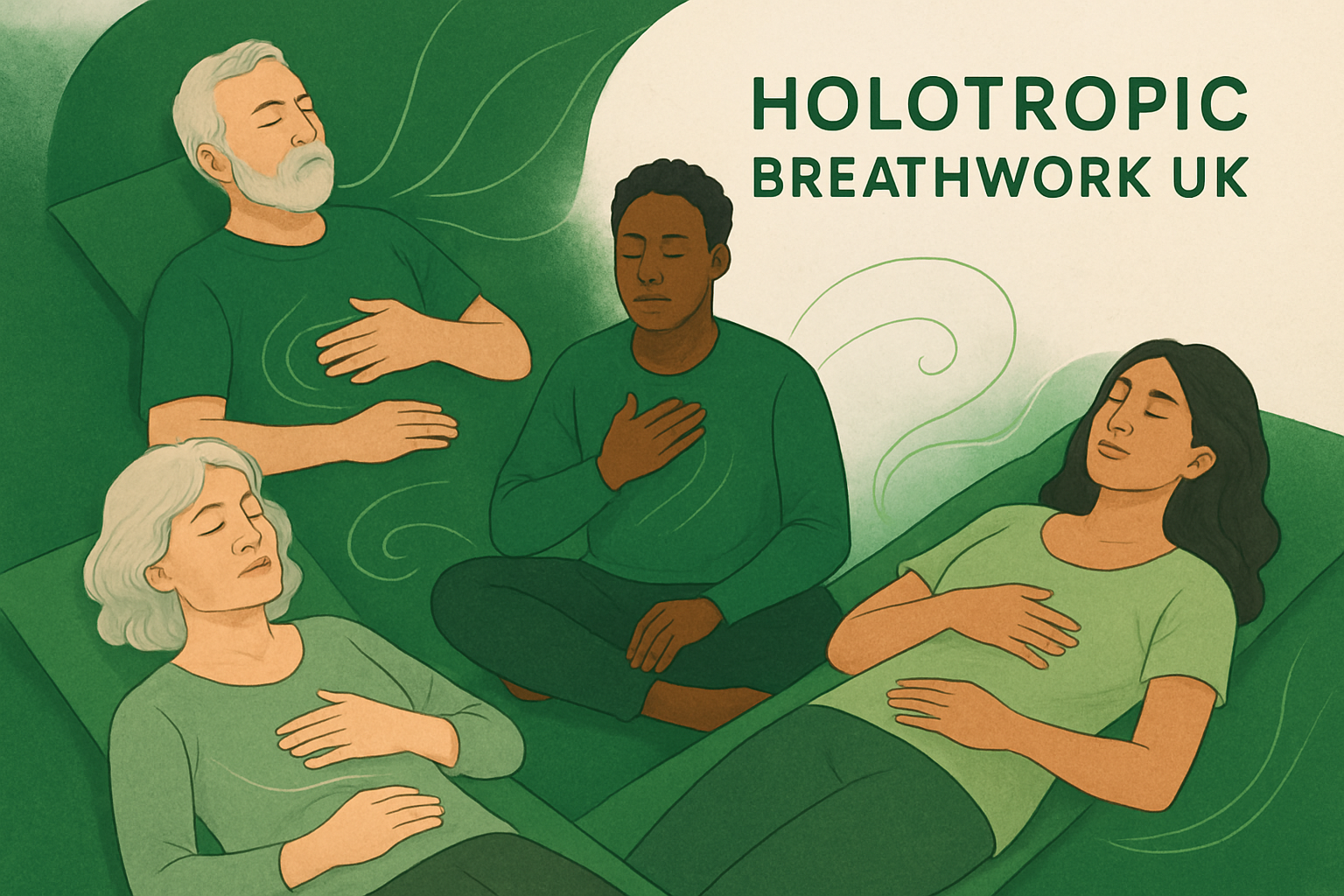
The Origins and Philosophy
Holotropic breathwork uk traces its roots to the pioneering work of Stanislav and Christina Grof. In the 1970s, after researching the therapeutic effects of LSD, the Grofs sought a safe, legal way to access non-ordinary states of consciousness. The term “holotropic” comes from Greek, meaning “moving toward wholeness,” and reflects the practice’s goal of integrating mind, body, and spirit.
This technique is deeply rooted in transpersonal psychology, which explores experiences beyond the ordinary sense of self. The Grofs believed in the concept of the “inner healer”—the idea that each person’s psyche intuitively knows how to guide their healing process. Unlike analytical talk therapy, holotropic breathwork uk is all about direct, embodied experience.
The transition from psychedelic therapy to breath-based methods marked a shift towards substance-free, accessible healing. Many ancient traditions, from shamanic drumming to yogic breathwork, have used altered states for insight and renewal. Holotropic breathwork uk draws inspiration from these, yet is structured for modern seekers.
Let’s compare holotropic breathwork uk to other transformational techniques:
| Technique | Approach | Use of Substances | Focus | Example Outcome |
|---|---|---|---|---|
| Holotropic Breathwork UK | Circular breathing | No | Experiential healing | Emotional release |
| Meditation | Mindful awareness | No | Stillness, insight | Calm, clarity |
| Yoga | Movement/breath | No | Mind-body integration | Flexibility, balance |
| Shamanic Journeying | Drumming/ritual | Sometimes | Spiritual exploration | Visionary experiences |
What sets holotropic breathwork uk apart is its emphasis on letting go of control and trusting the process. Every session is unique, shaped by the breather’s intention and inner landscape. The focus is not on analyzing problems, but on fully experiencing and integrating whatever arises.
Recent research supports these benefits. A study on Holotropic Breathwork and self-awareness development highlights its role in fostering personal growth and insight—key reasons for its rising popularity in the UK.
How Holotropic Breathwork Works
A typical holotropic breathwork uk session is both structured and deeply personal. The central practice is accelerated, circular breathing—fast, connected breaths taken without pause. This technique helps participants enter non-ordinary states where deep emotions and memories can surface.
Music is a vital part of the process. Carefully curated playlists guide the journey, with phases ranging from energizing rhythms to soothing, grounding melodies. The environment is designed for comfort and safety, often with mats, blankets, and low lighting.
There are three primary roles in a holotropic breathwork uk session:
- Breather: The participant engaging in the breathwork journey.
- Sitter: A supportive partner who ensures the breather’s safety and comfort.
- Facilitator: A trained guide who holds the space, offers guidance, and provides gentle bodywork if needed.
No drugs are involved—just breath, music, and a supportive setting. Sessions usually last around three hours, including time for preparation and integration. This structure allows for a gradual entry into the experience, time for the journey itself, and space to process insights afterward.
Here’s what a session might look like in the UK:
- Arrival and orientation with the facilitator.
- Setting intentions and assigning roles.
- The breathwork journey (around 2 hours).
- Creative integration (drawing, journaling).
- Group sharing and closing circle.
Many participants report powerful emotional releases, vivid imagery, or a sense of deep connection. Every holotropic breathwork uk session is different—some people access long-buried memories, while others experience profound peace or spiritual insight.
UK workshops often highlight the importance of preparation and aftercare, ensuring that every participant feels supported before, during, and after their journey. This commitment to safety and integration is a hallmark of holotropic breathwork uk events across the country.
The Structure of a Holotropic Breathwork Session
Understanding the structure of a holotropic breathwork uk session helps participants feel confident and prepared for the journey ahead. Each session is carefully designed to foster safety, depth, and meaningful transformation. Let’s explore how preparation, the breathwork process itself, and integration unfold in a typical UK setting.
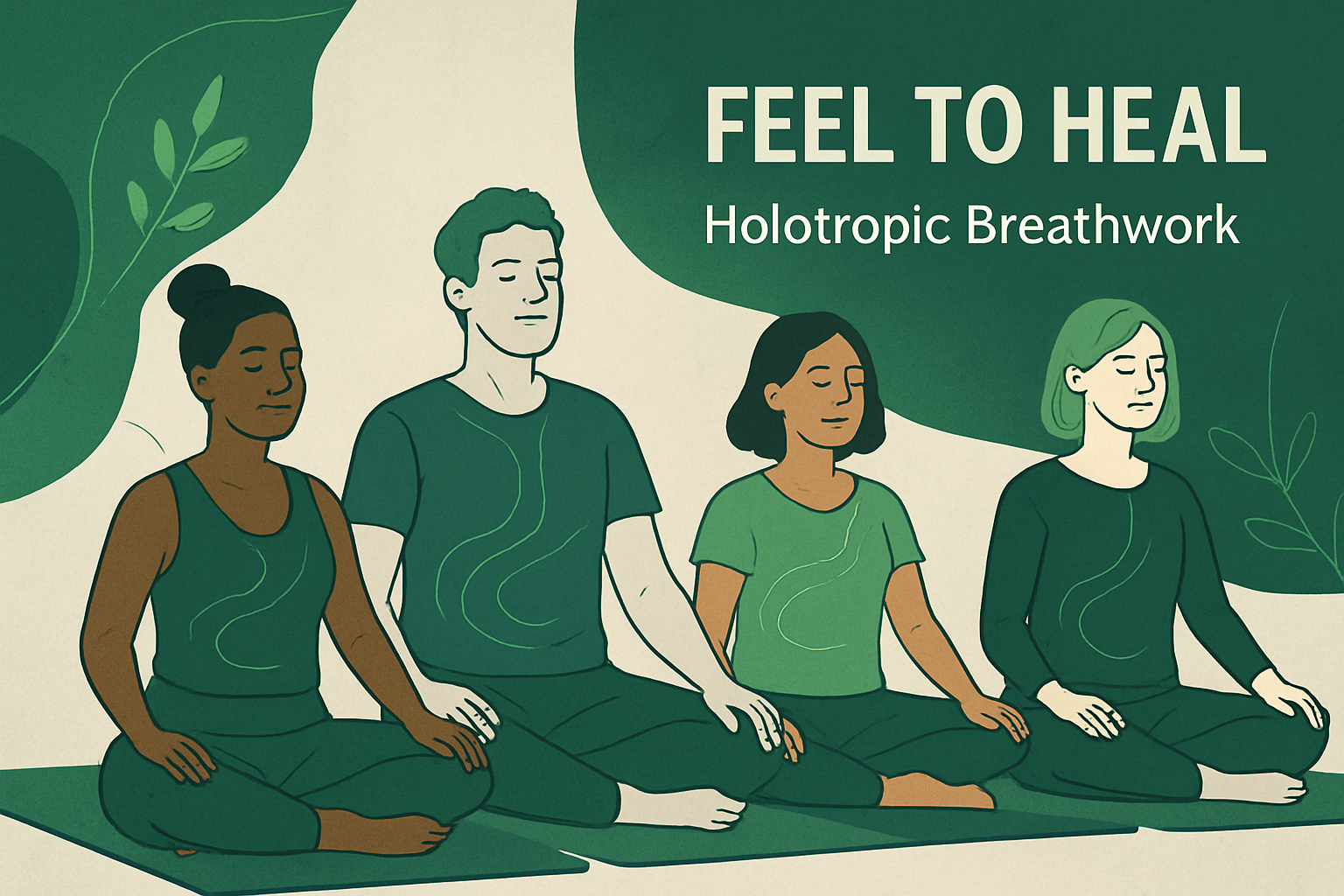
Preparation: Setting the Stage
Every holotropic breathwork uk session begins well before participants lie down to breathe. Preparation is essential for creating a safe, welcoming space and maximizing the potential for deep exploration.
Facilitators typically require a detailed medical questionnaire to screen for any health conditions that might contraindicate participation. This ensures that holotropic breathwork uk remains accessible only to those for whom it is safe.
Prior to the event, participants often join an online group meeting or one-to-one consultation. Here, facilitators explain the session flow, answer questions, and guide intention-setting exercises. Journaling and mindful self-reflection are encouraged, helping you clarify what you hope to explore or release.
Dietary guidelines may be suggested, such as eating light and avoiding stimulants. Group agreements around confidentiality, respect, and non-judgment are established. Some UK workshops use the Awareness Positioning System (APS), a simple internal compass that helps participants gauge their readiness and emotional state.
This careful groundwork ensures that once you step into the holotropic breathwork uk circle, you feel grounded, supported, and ready for the transformative experience ahead.
The Breathwork Session: Step-by-Step
When the day arrives, the holotropic breathwork uk process unfolds in a series of well-defined stages. Upon arrival, participants are greeted and oriented to the space. Roles are assigned—each person will spend time as both a “breather” and a “sitter,” ensuring everyone experiences the practice fully and safely.
As a breather, you’ll don an eye mask, settle onto a mat, and begin the signature accelerated, circular breathing pattern. The sitter’s role is to provide quiet support, witnessing without interfering. Facilitators remain attentive, holding space and offering gentle, energy-focused bodywork if needed. Music is a central component, carefully curated to guide the journey through energizing, epic, and grounding phases.
A typical holotropic breathwork uk session lasts about three hours, including opening circles, the main breathwork journey, and a period of gentle return. The timeline often looks like this:
| Phase | Duration | Activity |
|---|---|---|
| Arrival | 30 mins | Orientation, agreements |
| Breathing | 90-120 mins | Breathwork journey with music |
| Return | 20-30 mins | Quiet rest, gentle grounding |
To see what’s happening at UK events, check out the Holotropic Breathwork Events in Europe listing for real-time examples of session schedules and locations.
This structured approach gives holotropic breathwork uk its reputation for both safety and depth, providing a reliable container for intense, non-ordinary experiences.
Integration: Making Sense of the Experience
After the breathwork, integration is the key to transforming insights into lasting change. In holotropic breathwork uk, this step is never rushed. Immediately after the session, participants are encouraged to create mandalas, collages, or journal their experiences. These creative activities help process and anchor what emerged during the breathwork.
Group sharing circles provide space for verbal processing in a supportive, confidential environment. Facilitators guide gentle grounding techniques—such as mindful walking, hydration, or simple movement exercises—to help participants return fully to everyday awareness.
Follow-up meetings, often online or in-person, are scheduled days or weeks later. These sessions are vital for ongoing integration, allowing participants to revisit and deepen their understanding of what surfaced during holotropic breathwork uk.
UK facilitators often bring their own unique integration methods, from one-on-one check-ins to group circles focused on sharing and support. The emphasis remains on honoring each individual’s journey, recognizing that true healing continues long after the breathwork session ends.
Holotropic Breathwork in the UK: Availability, Events, and Facilitators
Exploring holotropic breathwork uk has never been more accessible. Over the past decade, the UK has seen a surge in interest, with a growing network of experienced facilitators and diverse event offerings designed for both newcomers and seasoned breathers.
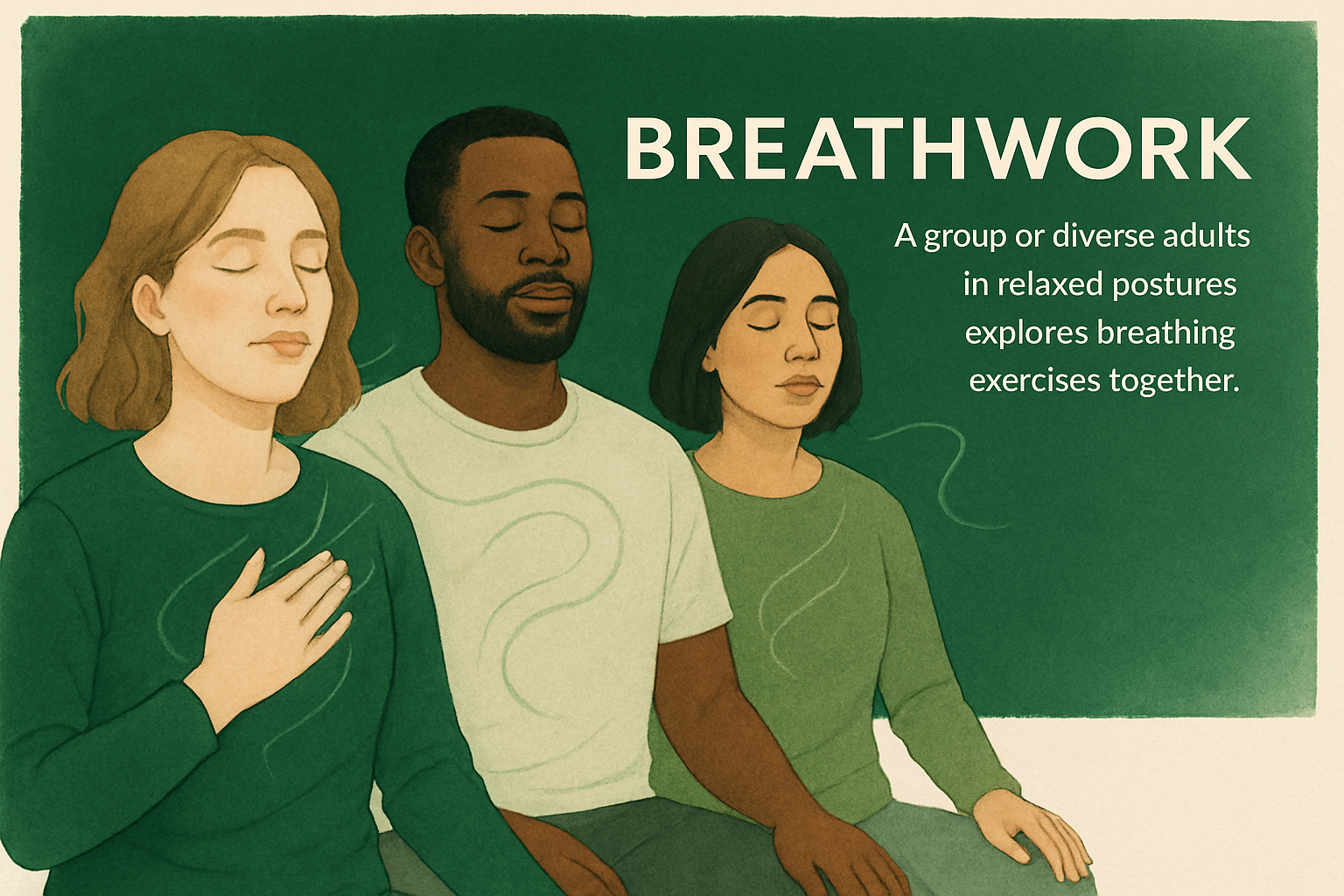
Where to Experience Holotropic Breathwork in the UK
The holotropic breathwork uk community is vibrant and welcoming. Leading organisations like Caledonian Holotropic and independent certified facilitators offer a wide array of experiences. You’ll find group workshops in major cities such as London, Manchester, and Edinburgh, as well as immersive rural retreats in tranquil countryside settings.
Event types range from one-day introductory sessions to weekend retreats that include online preparation and integration. Many providers host seasonal highlights, such as spring and autumn retreats, plus themed workshops focusing on creativity, trauma release, or personal growth. In 2025, expect a variety of signature events, including city-based taster days and multi-day rural immersions.
Here’s a sample day at a UK holotropic breathwork retreat:
| Time | Activity |
|---|---|
| 09:00–10:00 | Arrival & orientation |
| 10:00–11:00 | Group intention setting |
| 11:00–14:00 | Breathwork session (first wave) |
| 14:00–15:00 | Lunch & gentle movement |
| 15:00–18:00 | Breathwork session (second wave) |
| 18:00–19:00 | Integration & sharing circle |
Booking for holotropic breathwork uk events is typically done online. Expect to fill in a health questionnaire before confirmation. Costs range from £60–£100 for a day event, with weekend retreats averaging £250–£400 including meals and materials.
Facilitators prioritise safety and comfort, ensuring that each session supports deep personal exploration. Whether you’re seeking a city workshop or a rural escape, there’s a holotropic breathwork uk experience to match your needs.
Choosing a Qualified Facilitator
Selecting the right facilitator is essential for a safe and meaningful holotropic breathwork uk journey. Look for practitioners who have completed recognised certification, such as Grof Transpersonal Training. This rigorous process ensures facilitators are skilled in holding space, trauma-informed care, and ethical boundaries. You can learn more about the Holotropic Breathwork Facilitator Certification Process to understand what qualifications to expect.
When evaluating a facilitator, ask about their experience, approach to safety, and integration support. It’s wise to inquire about their ongoing supervision and how they handle challenging experiences. A trauma-informed practice is critical, as is clear communication about confidentiality and group agreements.
Be cautious of red flags, such as promises of guaranteed outcomes, lack of proper screening, or facilitators who position themselves as healers rather than guides. Reputable holotropic breathwork uk providers will always respect your autonomy and ensure you’re fully informed before participation.
Profiles of respected UK facilitators often highlight years of experience, advanced training, and a commitment to ongoing education. Many also offer follow-up support, online integration circles, or referrals to additional resources. Taking the time to choose wisely ensures your holotropic breathwork uk experience is both safe and transformative.
Safety, Contraindications, and Ethical Considerations
Safety is a cornerstone of holotropic breathwork uk. Whether you’re new or experienced, understanding who can safely participate and the ethical framework of sessions ensures a positive, transformative experience.
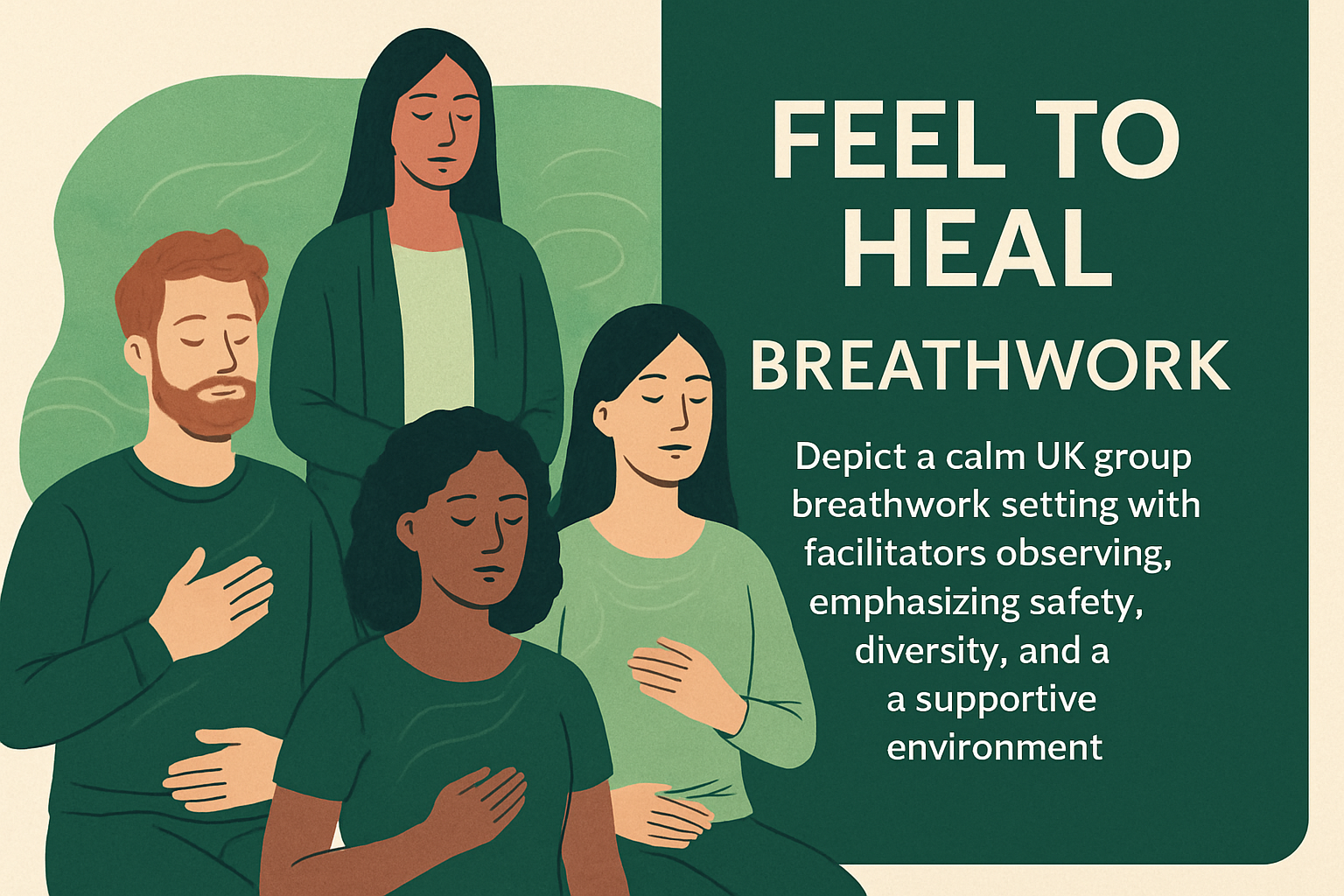
Who Should (and Should Not) Participate
Holotropic breathwork uk is open to many, but not everyone is suited for this deep practice. All reputable UK workshops begin with a detailed medical screening. This ensures participants are informed and safe before joining a session.
Common contraindications include:
- Heart conditions or high blood pressure
- Epilepsy or seizure disorders
- Severe psychiatric diagnoses (such as schizophrenia or psychosis)
- Pregnancy or recent surgery
If you’re unsure, always consult your GP before joining holotropic breathwork uk. Facilitators require full disclosure of relevant medical history to protect everyone involved.
Safety protocols are strict. Each participant is paired with a sitter, and certified facilitators oversee the process. These professionals are trained to create a safe, non-judgmental space and will intervene only if necessary. For more about facilitator training and safety standards, see Breathwork certification and facilitators.
Workshops in the UK emphasize informed consent. Facilitators are not therapists or healers; their role is supportive and non-directive. This approach empowers each person to explore at their own pace, while maintaining robust safety measures.
Ethics and Best Practices
Ethical considerations are central to holotropic breathwork uk. Respect for autonomy, boundaries, and confidentiality is non-negotiable. All UK groups set clear agreements: everyone’s experience is private, and sharing is always voluntary.
There’s no “correct” order of experience—each journey in holotropic breathwork uk is unique. Facilitators avoid leading or interpreting your process, trusting your inner guidance instead. This upholds your autonomy and preserves the integrity of the practice.
Workshops discourage over-reliance or dependency. While sessions can be deeply moving, they are designed to complement, not replace, other therapies. If emotional challenges arise, UK facilitators encourage aftercare and professional support as needed.
Feedback from participants shapes ongoing best practices in holotropic breathwork uk. Group agreements, regular check-ins, and transparent communication ensure everyone feels respected and safe throughout their journey.
Common Experiences, Benefits, and Potential Challenges
Stepping into a holotropic breathwork uk session, participants often discover a landscape of deep emotions, vivid sensations, and profound personal insights. While each journey is unique, there are common threads that weave through many experiences, from cathartic release to transcendent awareness.
What Participants Report Experiencing
Participants in holotropic breathwork uk frequently describe a spectrum of emotional, physical, and visionary experiences. Some report powerful emotional releases—tears, laughter, or deep feelings surfacing after years of being held inside. Others mention strong somatic sensations, such as waves of energy, tingling, or even a sense of lightness throughout the body.
Visions and insights are not uncommon. Many individuals encounter vivid imagery, from biographical memories to archetypal figures or dreamlike landscapes. Some describe a feeling of unity or interconnectedness, while others revisit pivotal life moments or process unresolved memories in a safe, contained way.
Transpersonal experiences can also emerge: participants sometimes report sensations of leaving their body, encountering meaningful symbols, or feeling a profound sense of peace. One participant at a recent UK retreat shared, “I felt as if I was both an observer and the experiencer—safely held but free to explore.”
Integration is vital. While some sessions bring joy or clarity, others may evoke discomfort or challenge. UK facilitators emphasize the importance of aftercare, grounding, and group sharing to help participants make sense of their holotropic breathwork uk journeys.
Documented Benefits and Outcomes
The benefits of holotropic breathwork uk are wide-ranging, touching mind, body, and spirit. Many participants report emotional healing, such as the release of old traumas and a newfound sense of self-acceptance. Others experience heightened creativity, spiritual connection, and a clearer sense of life’s purpose.
Research highlights breathwork’s potential. A recent meta-analysis on breathwork’s impact on stress and mental health found significant reductions in anxiety and improved emotional regulation, supporting what UK facilitators witness in practice. For those seeking trauma release and integration, approaches like trauma release breathwork insights highlight the value of supportive, structured environments.
Here’s a quick comparison of holotropic breathwork uk with other popular modalities:
| Modality | Drug-Free | Altered States | Integration Support | Group Process |
|---|---|---|---|---|
| Holotropic Breathwork UK | Yes | Yes | Strong focus | Yes |
| Meditation | Yes | Sometimes | Varies | Sometimes |
| Psychedelic Therapy | No | Yes | Therapist-led | No |
| Talk Therapy | Yes | No | Ongoing | Rarely |
Case studies from UK workshops reveal ongoing growth and transformation. One attendee reflected, “Months later, I’m still uncovering new layers of insight from my session.” Facilitators encourage regular integration practices to maximize these lasting benefits.
Potential Challenges and How to Prepare
Holotropic breathwork uk is a powerful modality, but it isn’t without challenges. Emotional intensity can arise, sometimes unexpectedly. Participants may face:
- Temporary physical discomfort (tingling, tension, fatigue)
- Emotional catharsis (crying, anger, sadness)
- Overwhelming memories or sensations
Preparation and aftercare are essential. UK facilitators recommend mindful self-reflection before a session, clear intention-setting, and arranging for support afterward if needed. Many offer follow-up integration groups or one-to-one check-ins.
If difficult emotions surface, facilitators provide grounding techniques and gentle reassurance. The group environment in holotropic breathwork uk workshops fosters safety and belonging, making it easier to process whatever arises. Ultimately, embracing both the light and the shadow is part of the journey toward wholeness.
Frequently Asked Questions about Holotropic Breathwork UK
Curious about what to expect from holotropic breathwork uk? Below, you’ll find answers to the most common questions UK participants ask before joining a session or workshop.
Does holotropic breathwork uk involve the use of drugs?
No. All sessions are entirely substance-free. Non-ordinary states are reached using only conscious, accelerated breathing, evocative music, and a safe, supportive environment.
Is the facilitator a healer or therapist?
Facilitators in holotropic breathwork uk act as guides, not as healers or psychotherapists. Their role is to hold space, ensure safety, and support your process, while you remain the primary agent of your own experience.
Is holotropic breathwork a form of shamanism?
While there are similarities—such as altered states and ceremonial structure—holotropic breathwork uk is rooted in transpersonal psychology, not traditional shamanic practice. For a broader comparison with other breathwork modalities, see Biodynamic breathwork explained.
Can holotropic breathwork uk be addictive?
No, there is no evidence that holotropic breathwork uk leads to physical or psychological addiction. Each session is unique and self-directed, with integration and balance as core principles.
What is the typical order of experiences?
There is no prescribed order or set outcome in holotropic breathwork uk. Each session unfolds differently, reflecting your inner state and intentions.
How often should you attend sessions?
Most UK facilitators recommend spacing sessions several weeks apart. This allows time for integration and personal reflection before the next experience.
What should you bring to a session?
Comfortable clothing, a water bottle, and a journal are usually recommended. Some workshops suggest bringing a small personal item for grounding, but requirements vary by facilitator.
Can holotropic breathwork uk be combined with other therapies?
Yes, many participants use it alongside talking therapy, meditation, or creative practices. Always inform your facilitators and therapists about any other modalities you’re using.
Are there age restrictions?
Most holotropic breathwork uk events are for adults (18+). Some facilitators may allow older teenagers with parental consent, but always check with the organiser.
Does it offer unique benefits compared to other breathwork techniques?
Yes. Holotropic breathwork uk is designed for deep self-exploration and transformation. For more on how it compares to other methods, read about different breathwork techniques and benefits.
Still have questions about holotropic breathwork uk? UK facilitators are happy to answer queries before you book a session—just ask!
If you’re feeling inspired by the possibilities of Holotropic Breathwork and curious about how these transformative sessions actually feel, why not experience it firsthand? After learning about the history, powerful methodology, and the unique UK offerings, there’s no better way to understand than by diving in yourself. Whether you’re seeking deep personal healing, emotional release, or just want to explore new states of awareness, guided in-person sessions offer a safe, supportive space to start your journey. Ready to take that next step? You can dive deep into personal healing with our in person workshops and discover what breathwork can unlock for you.


